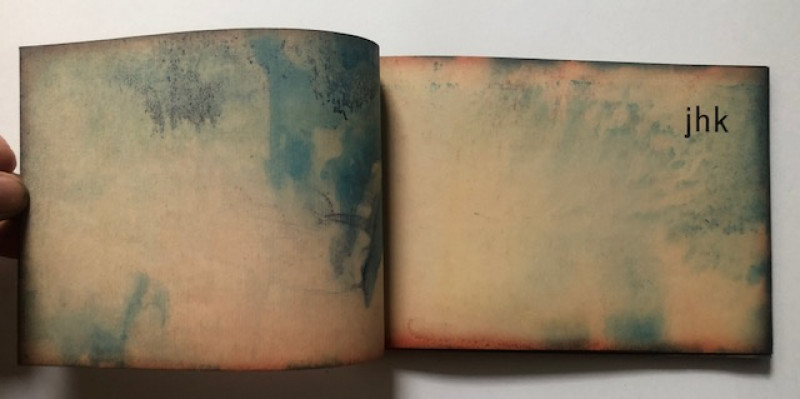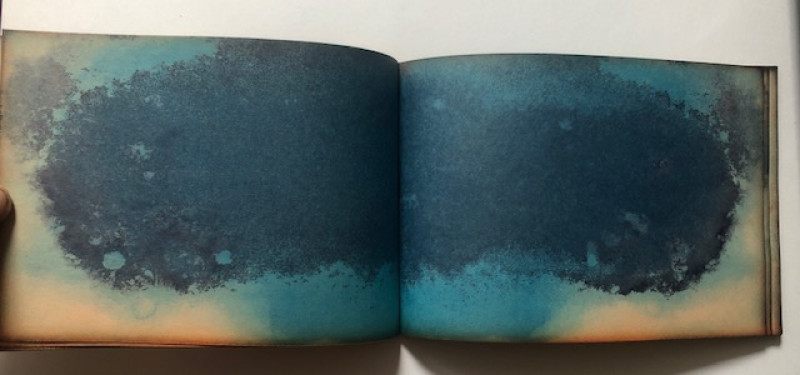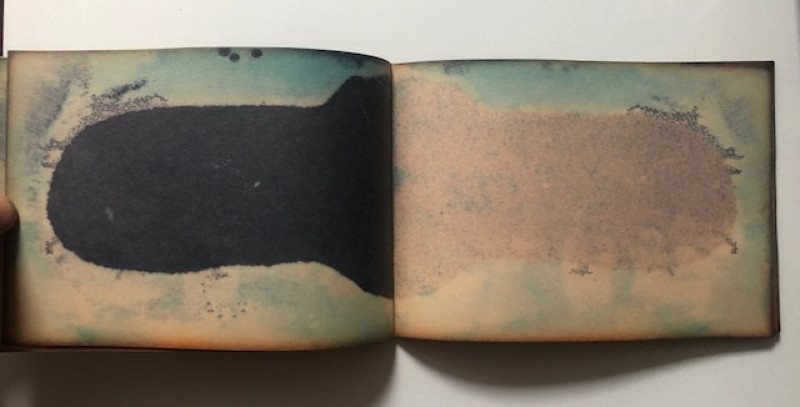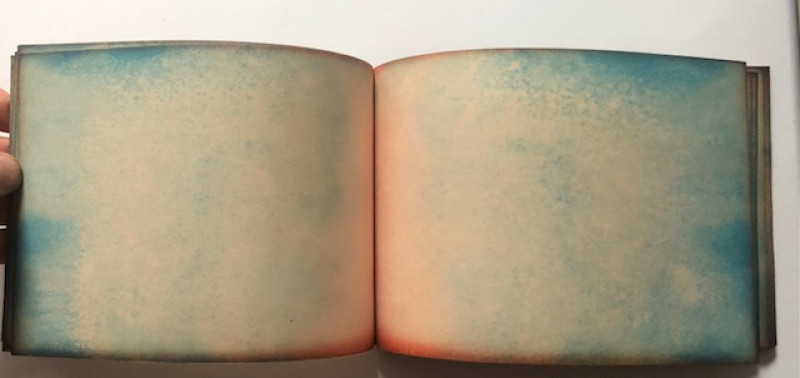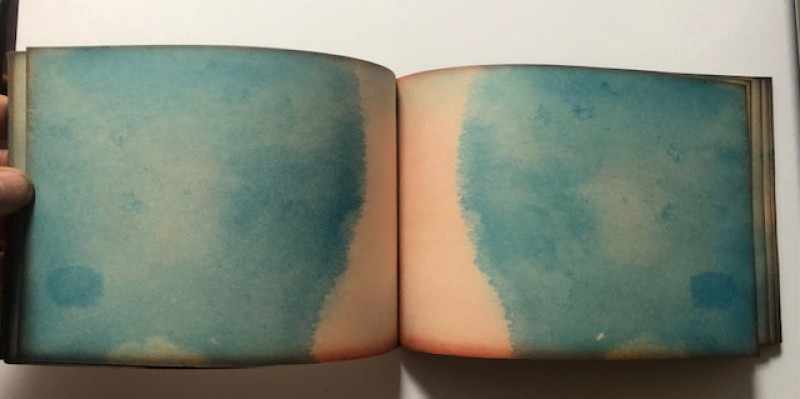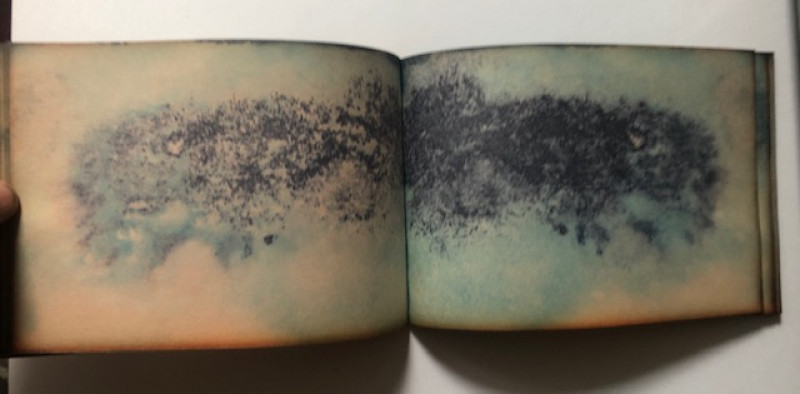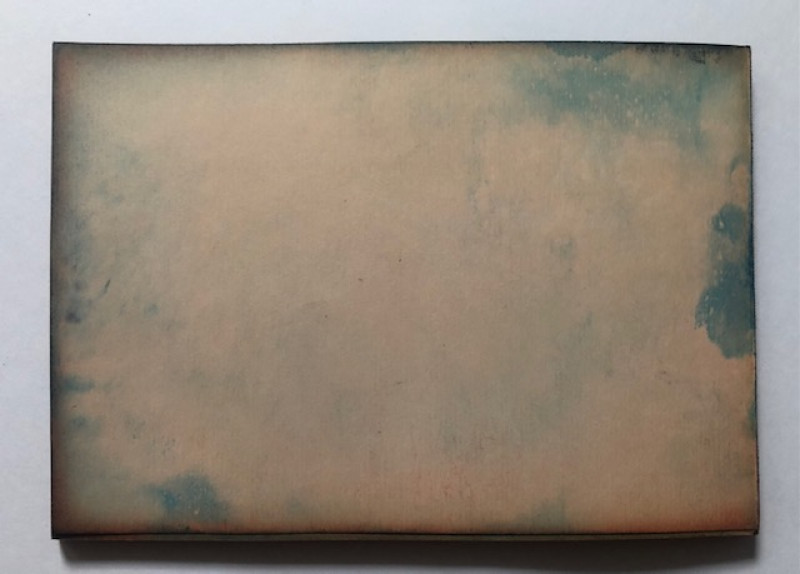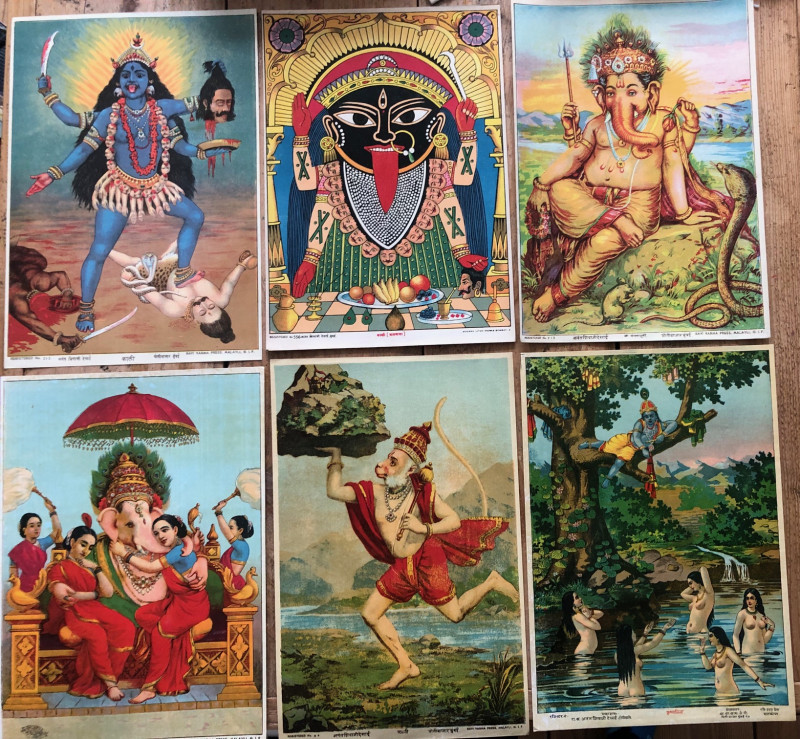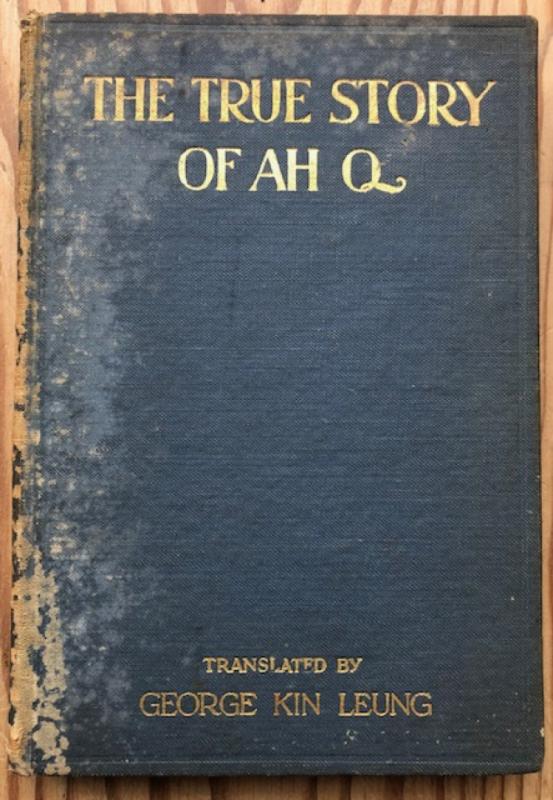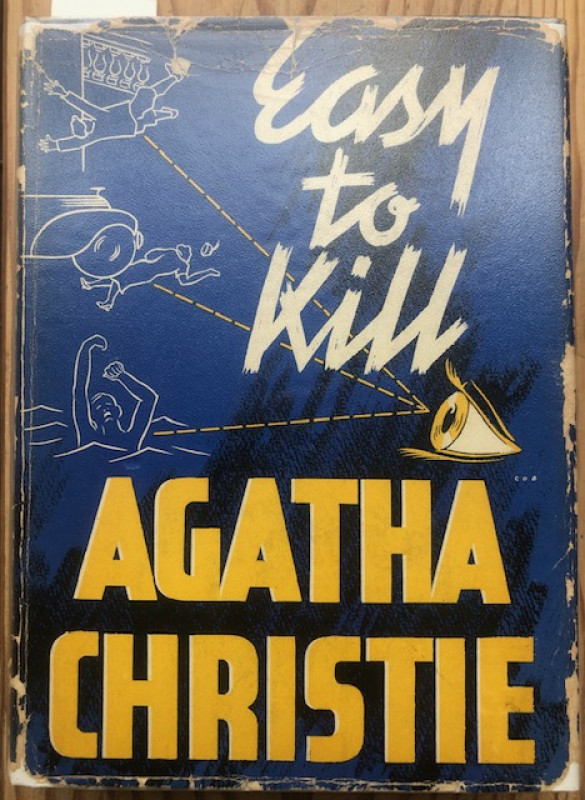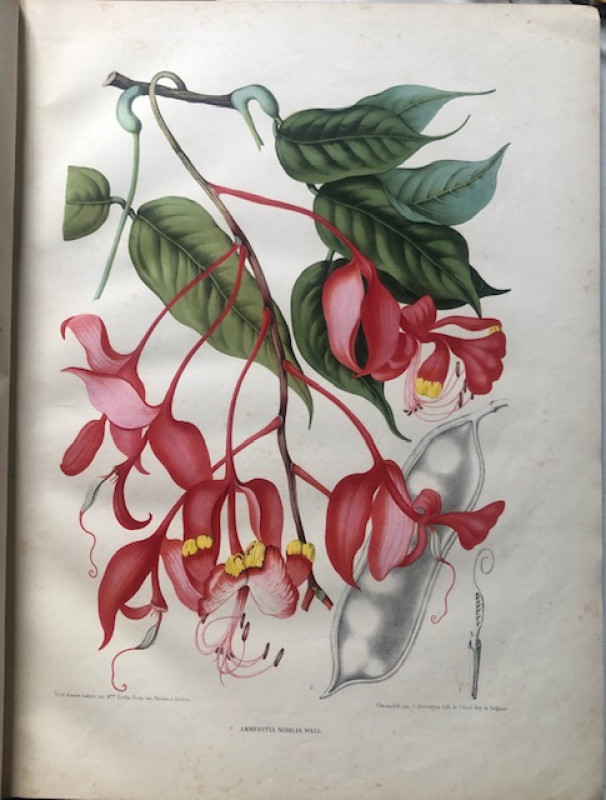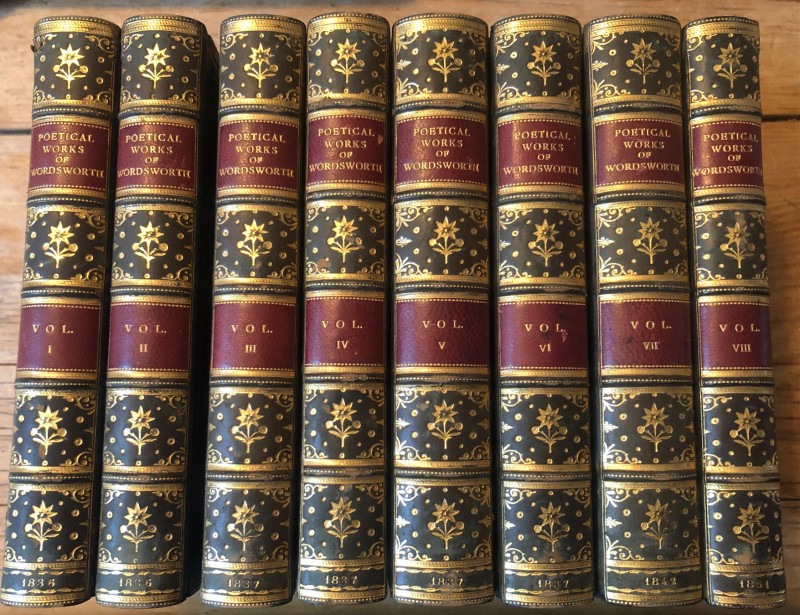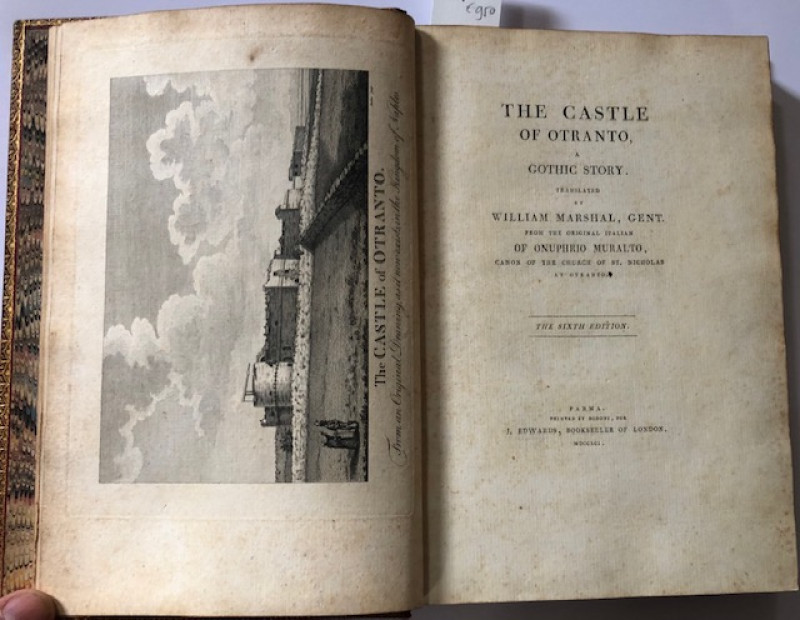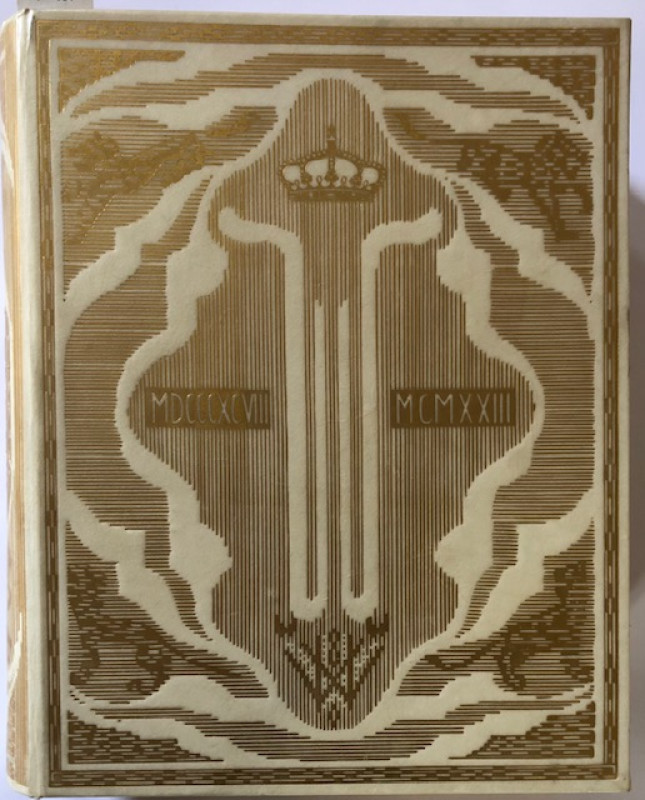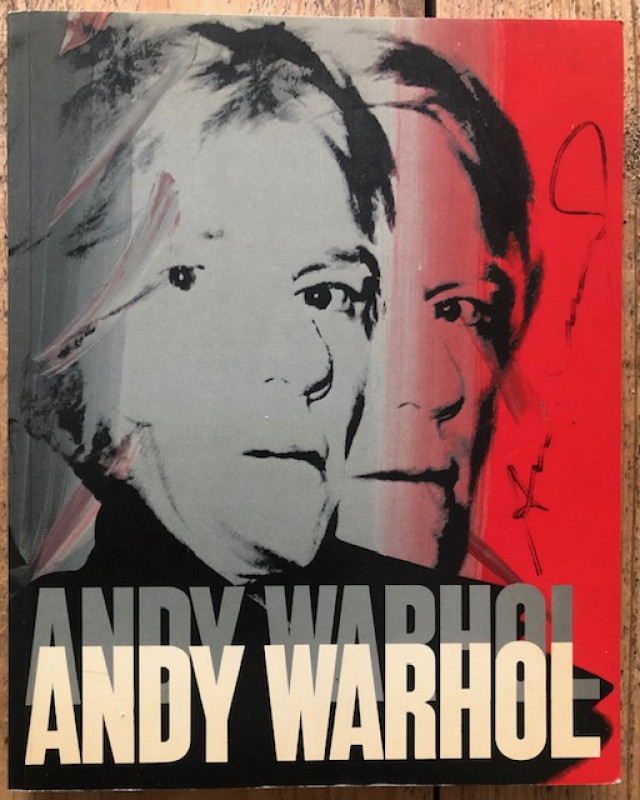JHK planaxol chromatographic book
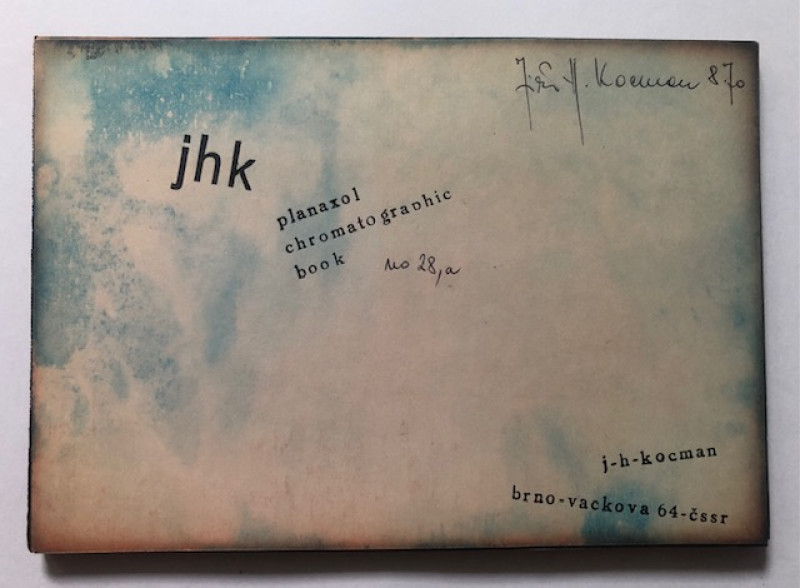










Book Description
Kocman, Jiri H. (b.1947). JHK planaxol chromatographic book.
Brno, J.H. Kocman, 1970, (46) leaves (incl. wrappers) with (coloured) (ink)stains, cloth spine, 14 x 20 cm.
Dealer Notes
= Extremely rare and important Czech artist's book. Frontwrapper with stamped title and address and autograph manuscript in black ballpoint: "Jiri H. Kocman 8.70" and "no 28,a"; second leaf with stamped "jhk"and third leaf with stamped"j-h-kocman" and "planaxol chromatographic bkk"
Jiri Valoch, J.H. Kocman - Artists' Books and papers (Galerie Rudolfinum, Prague, 1997), possibly no. 16 and illustration p.14 "Chromatographic book" (size and year are matching, pagination and title undefined).
Together with Jiri Valoch and Dalibor Chatrny, J.H.Kocman counts among the leading protagonists of Czech conceptual art whose life and work are closely linked with Brno. Paradoxically, the conceptual part of Kocman’s oeuvre has been displayed and published abroad more often than in the Czech Republic. (J.H. Kocman, Art activities 1970-1979 (Brno, Moravian Gallery, 2017)). Cf. Valoch (1997): In the footsteps of the 1960s Fluxus movement Kocman's artist's books became a medium allowing him to communicate his most subtle experiences, at the same time formulating a new type of artwork which reached beyond traditional categories and through its own practice formed new ones. At the beginning of the 70s, the work of some Czech artists involved in attempts to impart a new type of artistic message was comparable in quality and originality to that coming out of other countries. These artists, some of whom became part of 70s' international scene, worked outside the area of officially sanctioned art, but they communicated their message with a great deal of intensity, sometimes making the very forms of communication their theme. From 1970 Kocman's work moved strongly towards dematerialization and conceptualization, turning the artwork into a message with a strong emphasis on the communicative character of the work whose various forms the artist characteristically described as "activities". His Chromatographic books captured the process of individual injected pigments rising through capillary attraction, dactyloscopy books visualized the very process of turning the pages, preserved books demonstrated the structure of books in various sections. These works contributed to the creation of the discipline of artists' books, which at the turn of the decade appeared as possible forms of visual poetry, conceptual art and various categories of system practice. (…) In the context of contemporary Czech art, Kocman's work belongs among the most authentic, even though this authenticity may be hidden to some viewers underneath the mimicry of emphasis on craft and on use of skills acquired in the process of mastering it.
Jiri Valoch, J.H. Kocman - Artists' Books and papers (Galerie Rudolfinum, Prague, 1997), possibly no. 16 and illustration p.14 "Chromatographic book" (size and year are matching, pagination and title undefined).
Together with Jiri Valoch and Dalibor Chatrny, J.H.Kocman counts among the leading protagonists of Czech conceptual art whose life and work are closely linked with Brno. Paradoxically, the conceptual part of Kocman’s oeuvre has been displayed and published abroad more often than in the Czech Republic. (J.H. Kocman, Art activities 1970-1979 (Brno, Moravian Gallery, 2017)). Cf. Valoch (1997): In the footsteps of the 1960s Fluxus movement Kocman's artist's books became a medium allowing him to communicate his most subtle experiences, at the same time formulating a new type of artwork which reached beyond traditional categories and through its own practice formed new ones. At the beginning of the 70s, the work of some Czech artists involved in attempts to impart a new type of artistic message was comparable in quality and originality to that coming out of other countries. These artists, some of whom became part of 70s' international scene, worked outside the area of officially sanctioned art, but they communicated their message with a great deal of intensity, sometimes making the very forms of communication their theme. From 1970 Kocman's work moved strongly towards dematerialization and conceptualization, turning the artwork into a message with a strong emphasis on the communicative character of the work whose various forms the artist characteristically described as "activities". His Chromatographic books captured the process of individual injected pigments rising through capillary attraction, dactyloscopy books visualized the very process of turning the pages, preserved books demonstrated the structure of books in various sections. These works contributed to the creation of the discipline of artists' books, which at the turn of the decade appeared as possible forms of visual poetry, conceptual art and various categories of system practice. (…) In the context of contemporary Czech art, Kocman's work belongs among the most authentic, even though this authenticity may be hidden to some viewers underneath the mimicry of emphasis on craft and on use of skills acquired in the process of mastering it.
Author
Kocman, Jiri H. (b.1947)
Date
1970
Binding
Original illustrated artist-stained and stamped wrappers
Publisher
Jiri Kocman
Illustrator
Jiri Kocman
Condition
Very fine
Pages
(46) leaves (incl. wrappers)
Price: £3075.00
Offered by Fahrenheit 451 Antiquarian Booksellers
Friends of the PBFA
For £10 get free entry to our fairs, updates from the PBFA and more.
Please email info@pbfa.org for more information
